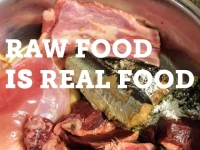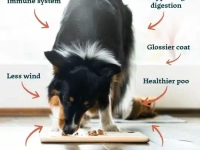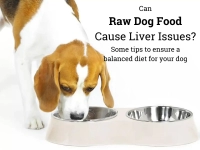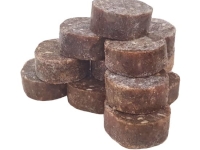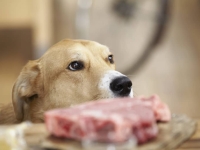Is Raw Dog Food Safe? A Comprehensive Guide to Feeding Your Dog Raw Meat in NZ
In This Article...
THE OVERVIEW...
Feeding your dog raw food has become a popular trend among pet owners in New Zealand. Many dog owners are exploring the benefits of a raw diet, which often includes raw meat, bones, and vegetables. However, with this trend comes a plethora of questions regarding the safety and nutritional balance of raw dog food. This comprehensive guide aims to provide clarity on the benefits, risks, and practicalities of feeding your dog raw meat.
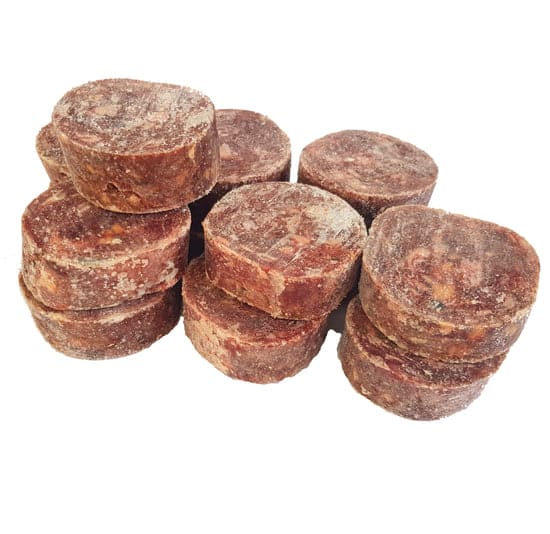
What Are the Benefits of Raw Dog Food?
Health Benefits of a Raw Diet for Dogs
One of the most significant health benefits of a raw diet for dogs is improved digestion. Raw dog food is less processed than kibble, allowing dogs to digest it more easily. This can lead to better nutrient absorption, which is essential for maintaining a healthy weight and overall well-being. Additionally, many pet owners report that their dogs experience fewer allergies and skin issues when switched to a raw diet. The natural enzymes present in raw meat can also contribute to better dental health, reducing plaque buildup and promoting fresher breath.
Moreover, a raw diet can enhance your dog’s energy levels. The high protein content found in raw meat provides the necessary fuel for active dogs, helping them maintain their vitality throughout the day. Furthermore, raw feeding can lead to a shinier coat, as the natural fats in raw meat support skin health. Overall, the health benefits of a raw diet can significantly improve your dog’s quality of life, making it a worthwhile consideration for pet owners.
How Raw Feeding Can Improve Your Dog’s Coat
Raw feeding can have a profound impact on the condition of your dog’s coat. The inclusion of raw meat, particularly fatty cuts like lamb and salmon, provides essential fatty acids that promote a healthy, shiny coat. These nutrients help to nourish the skin, reducing dryness and flakiness. Many pet owners notice a marked improvement in their dog’s coat texture and appearance after transitioning to a raw diet. Additionally, the absence of fillers and artificial additives commonly found in commercial dog food can lead to fewer skin irritations and allergies.
Furthermore, the natural oils present in raw food can help to maintain the moisture balance in your dog’s skin. This is especially beneficial for breeds prone to skin conditions. Regular consumption of raw meat can also support the overall health of your dog’s fur, making it less prone to matting and breakage. In essence, a raw diet not only contributes to your dog’s internal health but also enhances their outward appearance, showcasing the benefits of feeding raw.
Optimal Nutrition from Raw Pet Food
Feeding your dog raw pet food can provide optimal nutrition that closely resembles their ancestral diet. A balanced raw diet typically includes a variety of meats, bones, and vegetables, ensuring that your dog receives all the essential nutrients they need. For instance, raw chicken and beef are excellent sources of protein, while bones provide necessary calcium and phosphorus. Including organ meats, such as liver and kidney, can further enrich your dog’s diet with vitamins and minerals.
Moreover, raw feeding allows pet owners to tailor their dog’s diet according to their specific needs. Whether your dog requires a high-protein diet for energy or a lower-fat option for weight management, raw feeding offers the flexibility to adjust portions and ingredients. This personalized approach to nutrition can lead to improved health outcomes and a happier, more energetic dog. Ultimately, the optimal nutrition derived from raw pet food can play a crucial role in your dog’s overall health and longevity.
What Ingredients Can You Use in Raw Dog Food?
Should You Include Raw Chicken and Beef?
Raw chicken and beef are among the most commonly used ingredients in raw dog food. These meats are rich in protein, which is vital for your dog’s muscle development and energy levels. Many pet owners also choose to include a variety of meats, including fish, game and lamb, to provide a well-rounded nutritional profile.
However, it’s important to note that not all dogs may tolerate all proteins. Some dogs may have sensitivities or allergies, so it’s crucial to monitor your pet’s reaction when introducing new ingredients. Ultimately, including a variety of proteins in your dog’s diet can contribute to a balanced and nutritious raw feeding regimen.
The Role of Tripe and Offal in a Balanced Raw Diet
Tripe and offal play a significant role in creating a balanced raw diet for dogs. Tripe, which is the stomach lining of ruminant animals, is particularly beneficial due to its high probiotic content, promoting healthy digestion. Including tripe in your dog’s diet can help support their gut health, making it an excellent addition to raw feeding. Offal, such as liver and heart, is also crucial as it provides essential vitamins and minerals that may not be present in muscle meat alone.
Incorporating these ingredients into your dog’s raw diet can enhance the overall nutritional profile. Offal is rich in nutrients like vitamin A, iron, and B vitamins, which are vital for your dog’s energy levels and immune function. However, it’s essential to feed these ingredients in moderation, as they can be rich and may upset your dog’s digestive system if given in excess. By balancing muscle meat, tripe, and offal, you can ensure that your dog receives a comprehensive and nutritious raw diet.
Is Salmon Safe for Dogs in Raw Feeding?
Salmon can be a nutritious addition to your dog’s raw diet, providing essential omega-3 fatty acids that promote healthy skin and coat. Many pet owners choose to feed their dogs raw salmon in moderation, as the benefits can be significant but like anything, too much of a good thing can lead to excessive weight gain. You can cook salmon, but raw feeding enthusiasts often prefer to offer it in its natural state.
When introducing salmon into your dog’s diet, it’s advisable to start with small amounts to monitor for any adverse reactions. Some dogs may have sensitivities to fish, so gradual introduction is key. Overall, when incorporated properly, salmon can be a safe and beneficial component of a raw dog food diet, contributing to your dog’s overall health and well-being.
How to Transition Your Dog to a Raw Diet?
Steps for Starting Raw Feeding with Puppies
Transitioning puppies to a raw diet can be an exciting journey for pet owners. It’s essential to start gradually, introducing small amounts of raw meat alongside their current kibble. This method allows their digestive systems to adapt to the new food. Begin with easily digestible meats like chicken and gradually increase the proportion of raw food over several days. Monitoring your puppy’s reaction during this transition is crucial, as it helps identify any potential sensitivities or allergies.
Additionally, incorporating a variety of proteins and ingredients can help ensure that your puppy receives optimal nutrition. Including organ meats and bones can provide essential nutrients that support growth and development. It’s also important to consult with a veterinarian to ensure that the raw diet meets your puppy’s specific nutritional needs. By taking a gradual approach, you can successfully transition your puppy to a raw diet, setting the foundation for a healthy and balanced life.



How to Gradually Introduce Raw Meat to Your Dog’s Diet
Introducing raw meat to your dog’s diet should be done gradually to avoid digestive upset. Start by replacing a small portion of their regular kibble with raw meat, observing how they respond. This gradual approach allows their digestive system to adjust to the new food. Over the course of a week or two, you can slowly increase the amount of raw meat while decreasing their kibble intake. It’s essential to monitor your dog’s stool and overall health during this transition, as any changes can indicate how well they are adapting.
Additionally, consider incorporating a variety of meats to provide a well-rounded nutritional profile. For instance, you might start with raw chicken, then introduce beef, lamb, or even fish. This variety not only keeps your dog interested in their meals but also ensures they receive a range of nutrients. Remember to consult with your veterinarian for guidance and to ensure that your dog’s diet remains balanced and appropriate for their individual needs. Read more about transitioning your dog to raw dog food
Common Mistakes When Transitioning to Raw Dog Food
Transitioning to raw dog food can come with its challenges, and many pet owners make common mistakes that can hinder the process. One frequent error is making the switch too quickly, which can lead to digestive upset and discomfort for your dog. It’s crucial to take your time and gradually introduce raw food into their diet. Another mistake is not providing a balanced diet; some owners may focus solely on meat without incorporating essential nutrients from bones and vegetables.
Additionally, failing to monitor your dog’s health during the transition can lead to overlooked issues. Regularly check your dog’s stool and overall behavior to ensure they are adjusting well. It’s also important to educate yourself about the specific nutritional needs of your dog, as different breeds and life stages may require different dietary considerations. By avoiding these common pitfalls, you can help ensure a successful transition to a raw diet for your dog.
What Are the Risks of Feeding Raw Dog Food?
Are Bacteria and Parasites in Raw Meat really an Issue?
It is often believed that feeding raw dog food does come with risks concerning bacteria and parasites present in raw meat. Pathogens such as Salmonella and E. coli can pose health risks not only to dogs but also to humans handling the food. A study published in 2015 in the Canadian Medical Association Journal found that the benefits of owning a companion animal (dog) far outweighed the risks of contamination provided owners used safe food handling techniques:
- Cleaning surfaces before an after
- Washing hands after prearing raw meat
- Safe storage practice – defrosting and storing away from non-raw food
At Kuri we ensure that we source raw meat from reputable suppliers with safe food handling techniques to minimize these risks for our customers. Additionally, freezing raw meat for a specific period can help kill certain parasites, making it safer for your dog.
It’s important to note that while the risk exists, most dogs consume raw meat without any issues. Their digestive systems are designed to handle bacteria better than humans. Nevertheless, pet owners should remain vigilant and informed about the potential risks associated with raw feeding. Regular veterinary check-ups can also help monitor your dog’s health and ensure they are thriving on their raw diet.
Potential Allergies and Food Sensitivities in Dogs
Another concern when feeding raw dog food is the potential for allergies and food sensitivities. Just like humans, dogs can develop allergies to specific proteins or ingredients in their diet. Common allergens include chicken, beef, and grains, which may lead to symptoms such as itching, gastrointestinal upset, or ear infections. When transitioning to a raw diet, it’s crucial to monitor your dog for any signs of allergies and consult with a veterinarian if you notice any adverse reactions.
To minimize the risk of allergies, consider introducing novel proteins as an option. Kuri offers a range of novel protein sources like rabbit, venison and game to give owners options to not only balance a dogs diet but support any dogs that are experiences sensitivities. This approach allows you to identify any specific ingredients that may trigger a reaction. Additionally, rotating proteins can help prevent sensitivities from developing over time. By being proactive and attentive to your dog’s dietary needs, you can create a raw feeding plan that supports their health while minimising the risk of allergies.
How to Minimise Risks When Feeding Raw
Minimising risks when feeding raw dog food involves several key practices. First and foremost, sourcing high-quality, human-grade ingredients is essential. This ensures that the meat is fresh and free from harmful pathogens. Additionally, practicing safe food handling techniques, such as washing hands and surfaces after handling raw meat, can help prevent cross-contamination. It’s also advisable to consult with a veterinarian or a pet nutritionist to create a balanced raw diet that meets your dog’s specific needs.
Furthermore, consider incorporating supplements that can enhance your dog’s immune system and overall health. Probiotics, for example, can support digestive health and help your dog better tolerate raw food. Regular veterinary check-ups are also crucial to monitor your dog’s health and adjust their diet as needed. By taking these precautions, you can significantly reduce the risks associated with raw feeding and ensure a safe and nutritious diet for your dog.
How to Ensure a Balanced Raw Diet for Your Dog?
Essential Nutrients Your Dog Needs from Raw Food
Ensuring a balanced raw diet for your dog requires an understanding of the essential nutrients they need. Dogs require a variety of proteins, fats, vitamins, and minerals to thrive. Raw meat provides the primary source of protein, while bones contribute essential calcium and phosphorus. Organ meats, such as heart and tripe, are rich in vitamins A, D, and B, which are crucial for your dog’s overall health. Additionally, incorporating vegetables can provide fiber and antioxidants that support digestive health.
It’s important to strike a balance between these components to create a well-rounded diet. For example, a typical raw diet might consist of 70% meat, 20% bones, and 10% vegetables. However, this ratio can vary based on your dog’s age, activity level, and specific health needs. Consulting with a veterinarian or pet nutritionist can help you determine the right balance for your dog, ensuring they receive all the essential nutrients they need for optimal health.
How to Balance Meat, Bones, and Veggies in Raw Feeding
Balancing meat, bones, and veggies in raw feeding is crucial for providing a complete and nutritious diet for your dog. A common guideline is to aim for approximately 70% meat, 20% bones, and 10% vegetables. The meat should include a variety of protein sources, such as chicken, beef, lamb, and fish, to ensure a diverse nutrient intake. Bones should be raw and meaty, as cooked bones can splinter and pose a choking hazard.
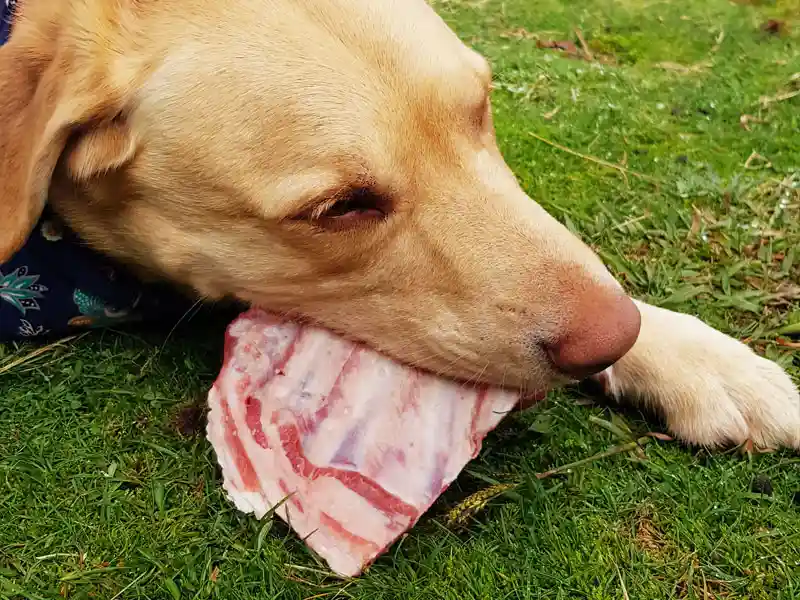
Incorporating vegetables can enhance the nutritional profile of your dog’s diet. Vegetables like carrots, spinach, pumpkin and kumara can provide essential vitamins and minerals while also promoting digestive health. It’s important to chop or puree vegetables to aid in digestion, as dogs may not efficiently break down whole vegetables. By carefully balancing these components, you can create a raw diet that supports your dog’s health and well-being.
The Importance of Human Grade Ingredients
Using human-grade ingredients in your dog’s raw diet is essential for ensuring their health and safety. Human-grade meat is subject to stricter regulations and quality control, reducing the risk of contamination with harmful bacteria and parasites. When you choose to feed your dog human-grade ingredients, you can have greater confidence in the quality and safety of their food. This is particularly important when feeding raw, as the risks associated with bacteria and parasites can be higher.
Additionally, human-grade ingredients often provide better nutritional value compared to lower-quality options. They are typically fresher and free from artificial additives and fillers that can negatively impact your dog’s health. By prioritising human-grade ingredients, you can create a raw diet that not only meets your dog’s nutritional needs but also supports their overall health and well-being. Investing in high-quality ingredients is a crucial step in ensuring that your dog thrives on a raw feeding regimen.
Where to Buy Raw Dog Food in NZ?
Top Raw Dog Food Products Available in Christchurch
In Christchurch, there is a growing selection of raw dog food products available for pet owners looking to feed their dogs a nutritious raw diet. Many local suppliers offer a range of options, including raw meat, bones, and complete raw meals. Popular products often include raw chicken, beef, lamb, and even specialty meats like venison and salmon. Ak Kuri we source these products from reputable suppliers, ensuring high quality and safety for your pet.
Our pre-packaged raw dog food that is formulated to meet the nutritional needs of dogs. These products include a balanced mix of meat and organ protein, making it easier for pet owners to provide a complete diet. By exploring local options in Christchurch, you can find a variety of raw dog food products that cater to your dog’s specific dietary requirements.
Delivery Options for Raw Pet Food
Many pet owners in New Zealand are turning to delivery options for raw pet food, making it more convenient to feed their dogs a nutritious diet. Several companies offer online ordering and home delivery services, allowing you to select from a wide range of raw meat, bones, and complete meals. This convenience is particularly beneficial for busy pet owners who may not have the time to visit stores regularly. Additionally, delivery services often provide access to high-quality, human-grade ingredients that may not be available in local shops.
When choosing a delivery service, it’s essential to research the company’s reputation and the quality of their products. Look for reviews from other pet owners to ensure that the food is fresh and safe for your dog. Many delivery services also offer subscription options, allowing you to receive regular shipments of raw dog food tailored to your dog’s needs. By utilising delivery options, you can simplify the process of feeding your dog a balanced raw diet.
At Kuri we offer Christchurch’s fastest and most cost-effective raw dog food delivery. If you order before 11am we aim to get to you that same day for only $8.
Choosing Between Homemade and Store-Bought Raw Food
When it comes to raw dog food, pet owners often face the decision of choosing between homemade and store-bought options. Homemade raw food allows for complete control over the ingredients, enabling you to tailor your dog’s diet to their specific needs. This option can be particularly appealing for pet owners who want to ensure the highest quality of ingredients, including human-grade meat and fresh vegetables. However, preparing homemade raw food requires careful planning and knowledge of your dog’s nutritional requirements to ensure a balanced diet.
On the other hand, store-bought raw dog food products offer convenience and often come pre-formulated to meet the nutritional needs of dogs. These products can save time and effort, making it easier for busy pet owners to provide a balanced diet. However, it’s essential to choose high-quality brands that prioritise human-grade ingredients and avoid fillers or artificial additives. Ultimately, the choice between homemade and store-bought raw food depends on your lifestyle, budget, and commitment to your dog’s nutrition. Whichever option you choose, ensuring a balanced and nutritious diet is key to your dog’s health and well-being.
Conclusion
Raw dog meat has come a long way in New Zealand in recent years with plenty of variety and options for owners and dogs alike. If you are looking for more information to make good choices for your dogs health and wellbeing, stop in at Kuri next time you’re on St Asaph Steet.



